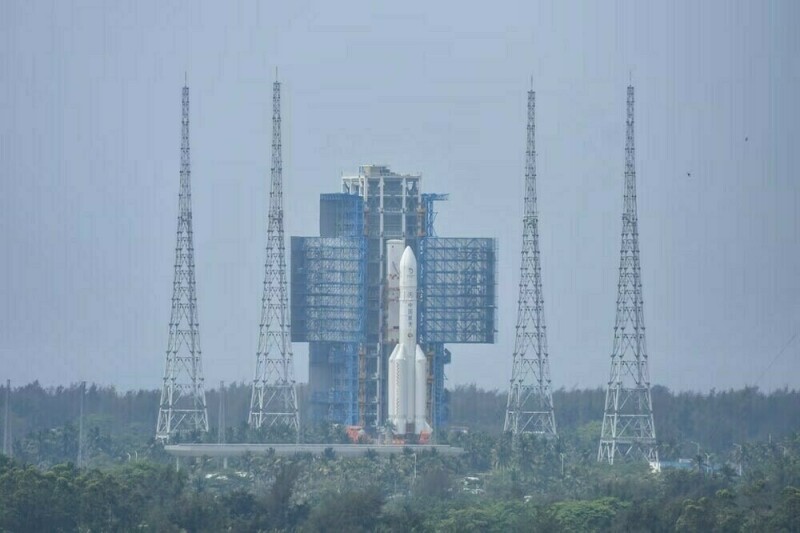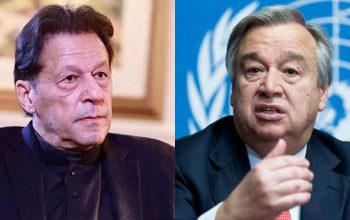Chang’e-6 lunar probe – named after the mythical Chinese moon goddess – returned to earth in China’s northern region of Inner Mongolia on June 25, 2024, carrying samples from the far side of the moon. The successful completion of the 53 days’ long mission is a boost for China, which is the first country to bring samples back from the hemisphere of the moon that always faces away from Earth.
Earlier in June, 2024, China had landed an uncrewed spacecraft in the South Pole-Aitken basin, a giant crater on the far side of the moon, where travel and communications are challenging. China also became the only country to land on the far side in 2019. The current mission was the first to bring back material to provide scientists from China and around the world with new insights into the formation of the solar system and differences between the far side of the moon and its more familiar Earth-facing side.
The successful mission, which follows the Chang’e-5 mission that brought back samples from the near side of the moon in 2020, is another boost for China’s ambitions to expand its space credentials.
It is gratifying that although China was a late starter in the global competition for the space station, yet, it is making up for lost time as well as sharing its findings with the world. Once the Chinese economy began to pick up speed in the 1990s, China began allocating resources to science and technology, especially to research in space.
Oblivious to the slight by the Occident, it not only made major strides in its quest for development and research but adopted a policy of sharing its findings.
In this latest accomplishment of the Chang’e 6 lunar mission, teams from Italy, France, Pakistan, and the European Space Agency were also involved.
Riding piggyback, the international payload included Pakistan’s ICUBE-Q satellite, fostering lunar image capture and data sharing initiatives. The cube satellite separated from the main probe five days after launching to undertake its own mission alongside China’s lunar exploration efforts.
During a ceremony in Beijing shortly afterwards, China transferred the first batch of lunar data to Pakistan, sharing the first photographs captured by ICUBE-Q and strengthening bilateral cooperation in space exploration.
The United Nations also acknowledged China’s moment of glory. Stephane Dujarric, spokesperson for United Nations Secretary-General Antonio Guterres, commended the mission as a “remarkable achievement” during a press briefing in New York City after the successful landing of Chang’e 6, and pointed to the level of international cooperation involved in the project.
It is imperative to mention China’s other recent space accomplishments. Readers may recall that on June 3, 2023, Shenzhou 15 spacecraft or “Divine Vessel” manned by three astronauts had successfully completed its mission, including docking with the Tiangong space station and conducting spacewalks. It was the second permanently inhabited space outpost, after the NASA-led International Space Station from which China was excluded in 2011.
The crew lived on the station for six months, taking over from three colleagues who had arrived in June 2022. The returning astronauts included Cai Xuzhe, a female astronaut Liu Yang and Chen Dong who came aboard the Shenzhou-14.
There was a week-long handover period, in part to trial the station’s ability to house six astronauts. It is the last of 11 missions required to assemble the station that is expected to operate for around a decade but extendable to 15 years under proper repair and maintenance and run experiments in near-zero gravity.
The first Chinese satellite, Dong Affang Hong I, was launched in 1970. In 2003, China became the third country to independently send man into space: Yang Liwei, a Chinese astronaut who successfully completed a spacewalk in 2008.
On December 1, 2020, as mentioned earlier, the Chang’e-5 spacecraft landed a probe on the lunar surface and collected soil and rock samples from the lunar surface and surface two feet below the surface, after which the spacecraft ascended to Earth.
The Chinese people were overjoyed to see the Chinese flag fluttering on the moon’s surface. The Chang’e-5 lunar probe concluded an epic Earth-Moon round trip, and managed to carry some 2 kilograms of lunar samples back to Earth on December 17, 2020, making China the third country in the world to achieve such a feat, and the first in more than four decades.
The success of the Chang’e-5 lunar mission also involved several breakthroughs in China’s space technology, including the first-ever sample collection on the lunar surface, a complex take off from the rough lunar terrain, and most challenging of all, the rendezvous and docking in lunar orbit, which are all believed to build a solid foundation for future manned lunar missions.
China launched a mission to Mars called Zhurong, in May 2021, in which a rover or vehicle used for space exploration landed successfully on Martian surface. The Chinese spacecraft has conducted a detailed survey of Mars, specifically exploring the frozen lakes on the Red Planet. Notably, China plans to send its first crewed mission to Mars in 2033 and wants to build a base there.
Over the next decade of the Tiangong’s operation, it is expected that China will launch two crewed missions to the station each year; this year it plans to launch both Shenzhou-18 and Shenzhou-19 crewed missions for which astronaut crews are currently undergoing training. Additionally, the Tianzhou-8 cargo spacecraft will conduct a resupply mission also in 2024. Shenzhou XIII will fly to the Tianhe core module of the Tiangong space station. It will carry three astronauts for a six-month mission inside the core module.
The Shenzhou 18 crew will meet the three astronauts from Shenzhou 17, who have been aboard Tiangong since October 2023. A handover ceremony will precede the Shenzhou 17 crew’s return to Earth in their spacecraft.
The significance of these missions is that by 2029, China wants to establish a space station on the moon to make it easier for humans to travel to the moon.
The significance of a permanent space station of China and its impact on the future merits discussion. The objectives of the space mission are that during their stay on the space station, the astronauts have carried out scientific experiments onboard as well as walk-in-space and repair-the-station activities. Secondly, they have prepared for additional space station modules. Extra vehicular activities (EVAs) are an important part of the Shenzhou missions.
There are numerous devices to be mounted or adjusted outside the station. The Shenzhou crews have conducted EVAs from the main airlock of the station, located in the Wentian module and airlock of Tianhe-1 will act as a backup in the future.
In the Mengtian module, there is an airlock, but this is to transfer goods between the cabin and outer space. EVAs are risky tasks for all space capable nations, and the lifespan of EVA spacesuits also has a limit. Using the cargo airlock will not only save resources, but ensure the safety of astronauts.
It is heartening that Pakistan is actively participating in China’s lunar exploration program, particularly in the Chang’e missions. Pakistan’s national space agency, Space & Upper Atmosphere Research Commission (SUPARCO) made a humble start in 1961 in Karachi with an objective to learn the art of rocketry and high altitude research from the United States; the agency worked to develop the capacity for a national satellite programme.
Initially, SUPARCO had limited funding but during the development of the Apollo programme, Dr Abdus Salam found an opportunity for Pakistan to start its space program with the foreign funding coming from the United States. On July 7, 1962, the Commission launched the first rocket, known as “Rahbar-I”, which reached the altitude of 80 mi (420,000 ft) in space However, following the 1965 and 1971 Pak-India wars and subsequent US embargoes, Pakistan’s space exploration quest received a severe setback.
Eventually, Pakistan reached out to Beijing, launching its first satellite from China in 1990. SUPARCO began to progress with Chinese support and currently Islamabad has officially joined China’s International Lunar Research Station (ILRS), which as mentioned earlier, aims to construct a permanent lunar base. The ILRS is seen as a parallel project and potential competitor to the NASA-led Artemis Program. Pakistan’s participation was formalized through an understanding signed between the China National Space Administration (CNSA) and the SUPARCO. The agreement covers extensive cooperation in the demonstration, implementation, operation, and application of the ILRS, as well as training and other areas.
In addition to the ILRS and Chang’e 6, CNSA and SUPARCO have also signed a Memorandum of Understanding on cooperation related to space debris and space traffic management.
Voyaging into space is perhaps the fruition of another aspect of the Chinese Dream. It has been a long journey for China, which was isolated for over two decades since the Occident refused to recognize it and had barred it from sharing the fruits of western scientific research and development. Besides becoming an economic giant and eliminating absolute poverty from the whole of China, the Chinese space research program, under the auspices of the Communist Party of China, has emblazoned new trails of glory, making its nation proud. Hopefully, Pakistan too, with its see-saw-like relationship with the west, will now benefit by teaming up with its “Iron Brother” China.
The article does not necessarily reflect the opinion of Business Recorder or its owners
Read the full story at the Business Recorder - Latest News website.


